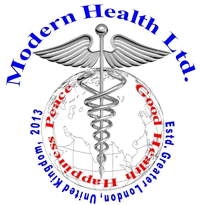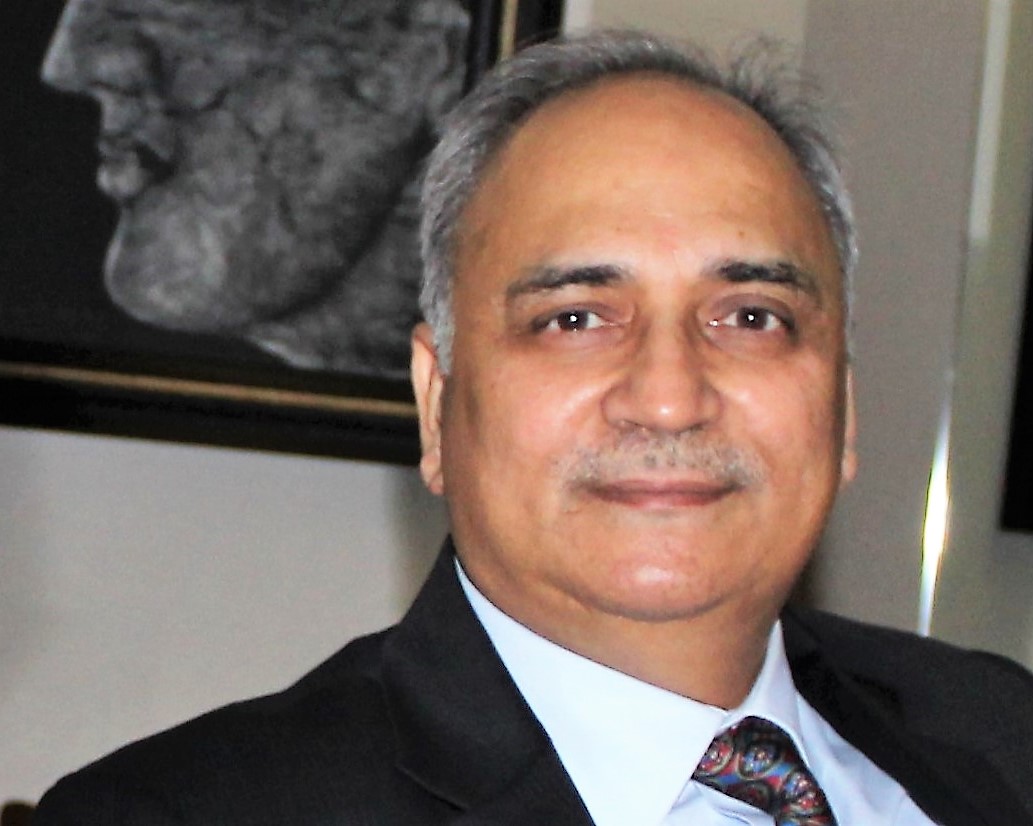Modern Health Limited is run by Dr Prem Bajaj who is a Physicain and a Pain Specialist. He is an Ex. Assistant Professor in Neuroscience and Pain Research at the European Doctoral School, Denmark and Chronic Pain Specialist at Imperial College NHS Trust, London. He is a fully accredited member of the British Medical Acupuncture Society (BMAS) and he has been practicing acupuncture for many years.
BMAS is the regulatory body for health care professionals who practice acupuncture alongside conventional medicine. The Society believes that acupuncture has an important role to play in healthcare today, and that it is vital to present a balanced view in order that practitioners and patients may make informed decisions about its use.
For appointments write to: This email address is being protected from spambots. You need JavaScript enabled to view it. or call at +44 (0) 2088450017 / +44 (0) 7472427427
The World Health Organisation also supports acupuncture treatment and it unites both main stream and alternative healthcare practitioners. Modern Health Ltd is pleased to offer the services of Dr Prem Bajaj. Dr Bajaj has practised medicine for over 40 years and medical acupuncture for over 25 years. In 1993, he received intensive acupuncture training at one of the busiest acupuncture clinics in Delhi, India in traditional acupuncture and his quest to practice on the principles of modern western medicine and on scientific principles brought him to England to receive training from Dr Anthony Campbell MRCP, at the Royal London Homeopathic Hospital and at the British Medical Acupuncture Society, where he received intensive practical training with Dr Palle Rosted in Sheffield and Dr Felix Mann in London. Dr Bajaj’s interest and skills in the field of acupuncture grew further, which led him to write his Master of Medical Science modules on Acupuncture treatments. He also submitted his acupuncture treatment dissertation to the British Medical Acupuncture Society and was awarded the Certificate of Competence in the practice of medical acupuncture in 1998. He further gained his Diploma in Medical Acupuncture from the British Medical Acupuncture Society in 2017.
Dr Prem Bajaj has written over 30 publications and has presented his work on pain management at over 25 international congresses. He has been the honorary reviewer for several high impact journals that include Scandinavian Journal of Medicine & Science in Sports, Journal of Pain, Clinical Journal of Pain, Journal of Musculoskeletal Pain and European Journal of Pain. Currently he reviews papers for Medical Hypotheses and Pain Medicine journals.
Over 2000 years ago Acupuncture as a holistic therapy originated in ancient China and using small needles it aimed to correct imbalances in the flow of energy throughout the body by stimulating nerves, muscles and connective tissues, using the concepts of meridians and acupuncture points. Modern acupuncture is a scientific approach based on anatomy, physiology, pathology and clinical medical practice.
Widespread interest in acupuncture has developed in the west about forty years ago. Considerable scientific research has been carried out due to increased public interest and consequently we now know much more about how acupuncture works. Modern physiologists have suggested the “neural hypothesis” indicating that the influence of acupuncture can be transmitted through stimulation of sensory nerves that send signals to the brain, which leads to clinical changes. Using modern acupuncture techniques one needs a thorough knowledge of anatomy, physiology and pathology and the principles of evidence based medicine.
There is well established evidence that acupuncture causes the release of the body’s natural pain killers e.g. endorphins and serotonin. This modifies the pain signals in the pain pathways of the spinal cord and brain. It also relieves symptoms of some physical and psychological conditions and may encourage the patient’s body to heal and repair itself and maintain homeostasis (i.e. natural the tendency towards a relatively stable equilibrium between interdependent elements, especially as maintained by physiological processes). Therefore acupuncture has beneficial effects on health such as improved sense of wellbeing.
Diseases and disorders that can be treated with acupuncture
The diseases or disorders for which acupuncture therapy has been tested in controlled clinical trials reported in the recent literature can be classified into four categories as shown below.
1. Diseases, symptoms or conditions for which acupuncture has been proved-through controlled trials-to be an effective treatment:
Adverse reactions to radiotherapy and/or chemotherapy
Allergic rhinitis (including hay fever)
Biliary colic
Depression (including depressive neurosis and depression following stroke)
Dysentery, acute bacillary
Dysmenorrhoea, primary
Epigastralgia, acute (in peptic ulcer, acute and chronic gastritis, and gastrospasm)
Facial pain (including craniomandibular disorders)
Headache
Hypertension, essential
Hypotension, primary
Induction of labour
Knee pain
Leukopenia
Low back pain
Malposition of fetus, correction of
Morning sickness
Nausea and vomiting
Neck pain
Pain in dentistry (including dental pain and temporomandibular dysfunction)
Periarthritis of shoulder
Postoperative pain
Renal colic
Rheumatoid arthritis
Sciatica
Sprain
Stroke
Tennis elbow
2. Diseases, symptoms or conditions for which the therapeutic effect of acupuncture has been shown but for which further proof is needed:
Abdominal pain (in acute gastroenteritis or due to gastrointestinal spasm)
Acne vulgaris
Alcohol dependence and detoxification
Bell’s palsy
Bronchial asthma
Cancer pain
Cardiac neurosis
Cholecystitis, chronic, with acute exacerbation
Cholelithiasis
Competition stress syndrome
Craniocerebral injury, closed
Diabetes mellitus, non-insulin-dependent
Earache
Epidemic haemorrhagic fever
Epistaxis, simple (without generalized or local disease)
Eye pain due to subconjunctival injection
Female infertility
Facial spasm
Female urethral syndrome
Fibromyalgia and fasciitis
Gastrokinetic disturbance
Gouty arthritis
Hepatitis B virus carrier status
Herpes zoster (human (alpha) herpesvirus 3)
Hyperlipaemia
Hypo-ovarianism
Insomnia
Labour pain
Lactation, deficiency
Male sexual dysfunction, non-organic
Ménière disease
Neuralgia, post-herpetic
Neurodermatitis
Obesity
Opium, cocaine and heroin dependence
Osteoarthritis
Pain due to endoscopic examination
Pain in thromboangiitis obliterans
Polycystic ovary syndrome (Stein-Leventhal syndrome)
Postextubation in children
Postoperative convalescence
Premenstrual syndrome
Prostatitis, chronic
Pruritus
Radicular and pseudoradicular pain syndrome
Raynaud syndrome, primary
Recurrent lower urinary-tract infection
Reflex sympathetic dystrophy
Retention of urine, traumatic
Schizophrenia
Sialism, drug-induced
Sjögren syndrome
Sore throat (including tonsillitis)
Spine pain, acute
Stiff neck
Temporomandibular joint dysfunction
Tietze syndrome
Tobacco dependence
Tourette syndrome
Ulcerative colitis, chronic
Urolithiasis
Vascular dementia
Whooping cough (pertussis)
3. Diseases, symptoms or conditions for which there are only individual controlled trials reporting some therapeutic effects, but for which acupuncture is worth trying because treatment by conventional and other therapies is difficult:
Chloasma
Choroidopathy, central serous
Colour blindness
Deafness
Hypophrenia
Irritable colon syndrome
Neuropathic bladder in spinal cord injury
Pulmonary heart disease, chronic
Small airway obstruction
4. Diseases, symptoms or conditions for which acupuncture may be tried provided the practitioner has special modern medical knowledge and adequate monitoring equipment:
Breathlessness in chronic obstructive pulmonary disease
Coma
Convulsions in infants
Coronary heart disease (angina pectoris)
Diarrhoea in infants and young children
Encephalitis, viral, in children, late stage
Paralysis, progressive bulbar and pseudobulbar
Acupuncture Treatment
You will be assessed in detail at the first session and treatment will be tailored to your individual needs. Typically, fine needles are inserted through the skin and left in position briefly, sometimes with manual or electrical stimulation or laser acupuncture.
The first treatment is usually using only a few needles with minimal stimulation. Treatment is once a week to begin with, then at longer intervals as the condition responds.
The needles used are sterile and single use. A “no-touch” technique is used which means that the acupuncturist’s hand will at no time come into direct contact with the needle because of the use of a sterile insertion tube.
The most common side effect is sleepiness which is related to the body’s endorphin release following acupuncture. Hence it is advisable not to drive after treatment, especially after the first treatment.
The needles used for acupuncture are very fine, like a hair, hence almost no pain is felt as they pass through the skin. However, occasionally when treating extremely sensitive trigger points, a slight pain may be associated with the needling, but this is usually very brief.
You may experience a temporary mild exacerbation of the pain condition being treated which may last for 24 hours. Occasionally a bruise may develop at the site of needling.
A typical course of treatment lasts for 5 to 8 sessions.
• Acupuncture treatment given is approved by most private medical insurance providers (please check with your provider).
• You do not need a GP or Consultant referral for acupuncture treatment but it is advisable to inform them.



